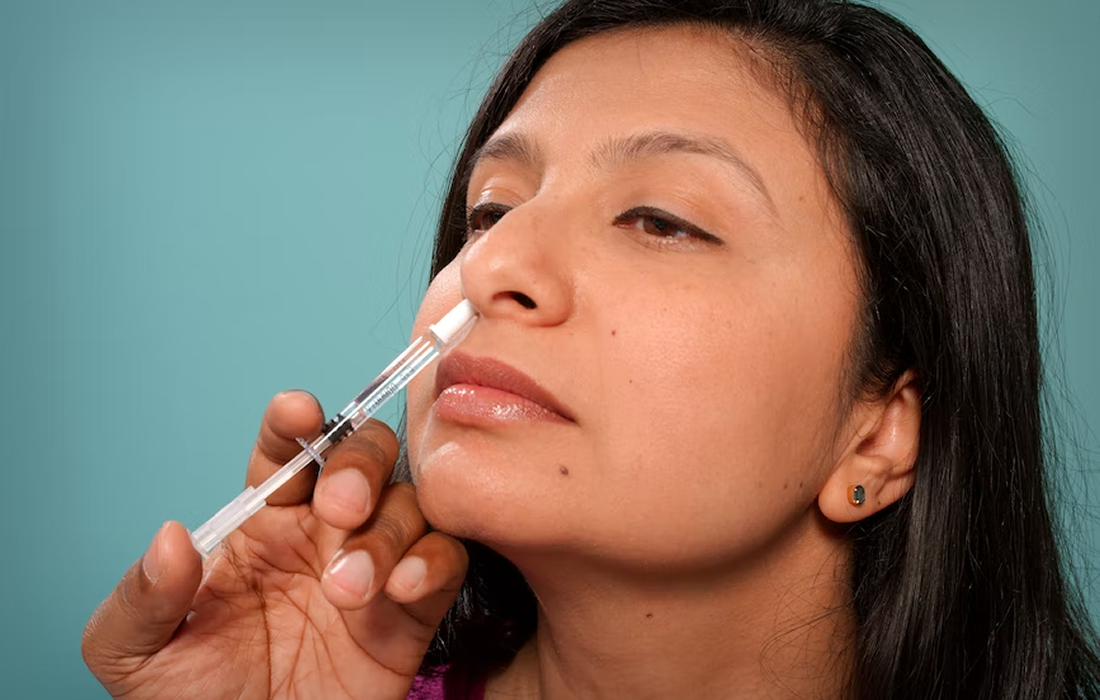COVID-19
Future for the COVID Vaccine’s
Are nasal sprays the future of COVID-19 vaccines? That’s certainly the hope of many researchers working on new kinds of inoculation. Nasal vaccines were recently approved in China and India for use as a booster dose. The Chinese vaccine is inhaled through the mouth and nose, whereas the Indian vaccine is delivered through nasal drops.
The German Association of Research-Based Pharmaceutical Companies (VFA) has provided a good overview of the next generation of COVID vaccines.
Sterilizing Immunity
SARS-CoV-2 enters the body via the mucous membranes in the mouth and nose. In theory, oral or nasal vaccines could prime the immune cells in these mucous membranes and quickly stop the virus in its tracks before it spreads. It is hoped that these vaccines will prevent even mild cases of illness and block transmission to other people.
Vaccines that generate a sterilizing immunity would be crucially important for the pandemic. In the estimation of Leif Erik Sander, PhD, vaccine researcher from the Charité University Hospital in Berlin, Germany, nasal vaccines would have a significant effect on transmission and infection.
Preclinical model studies
Preventing infection and transmission is a high bar for any vaccine. However, studies of SARS-CoV-2 mucosal vaccines in animals suggest that it is possible. For example, a study in mice found that an intranasal booster induced mucosal immunity and completely protected the animals from a lethal level of exposure to the virus, whereas an intramuscular booster did not.
A study with rhesus macaques that was published at the end of May. In this study, an intranasal vaccine completely protected the animals from SARS-CoV-2 infection. Virus replication was undetectable in the macaques’ airways and lung tissues, says Ursula Buchholz, chief of the RNA viruses section at the National Institute of Allergy and Infectious Diseases (NIAID), which led the study.
In China and India, nasal vaccines are already in use. The current COVID-19 vaccines provide effective protection against severe illness and prevent hospitalizations. They do very little to prevent transmission, however, and they are also not particularly good at protecting against mild illness.
What is the difference between intramuscular and mucosal vaccines ?
Intramuscular injection triggers an immune reaction that includes T cells, which destroy infected cells, and B cells, which produce antibodies to neutralize the pathogens, binding to them to stop them from entering healthy cells. These cells and antibodies circulate through the bloodstream. However, they are not present at high enough levels in the nose and lungs to provide rapid protection.
Mucosal vaccines can trigger an immune reaction throughout the body, including by activating immune cells in the mucous membranes of the nose and airways. Mucosal vaccines are being tested as first doses for unvaccinated people and as booster vaccinations.
Indicators of Effectiveness
There is a quick way to predict whether an intramuscular COVID-19 vaccine will be effective: measure the neutralizing-antibody levels circulating in the blood. Higher levels generally mean better protection. For mucosal vaccines, no clear-cut correlate exists.
Many developers are measuring immune responses in the airways, including secretory immunoglobulin A (IgA), other antibodies, and tissue-resident memory T cells. These probably contribute to protection, but it is unclear what levels are necessary to prevent infection and transmission.
Coming Soon?
According to information from Airfinity, a health-analytics company in London, United Kingdom, 20 of the around 100 COVID-19 mucosal vaccines in development globally are currently being tested in clinical studies. At least four — in India, Iran, and two in China — have been completed or are undergoing phase 3 studies to test safety and efficacy compared with other vaccines.
Large-scale human study data on mucosal vaccines in the US and Europe will take another year or 2. Countries at the moment seem to be satisfied with protection against hospitalization rather than infection. So, funding and resources are very different, and I don’t think we’ll see the same speed of development.
SOURCE:
Emily Waltz, (September 6, 2022). How nasal-spray vaccines could change the pandemic. Nature. Retrieved from : https://www.nature.com/articles/d41586-022-02824-3
Utte Epinger, (October 3, 2022). Are Nasal Sprays the Future for the COVID Vaccine?. Medscape. Retrieved from : https://www.medscape.com/viewarticle/981773?src=#vp_3
IMAGE:
Photo by CDC on Unsplash.

